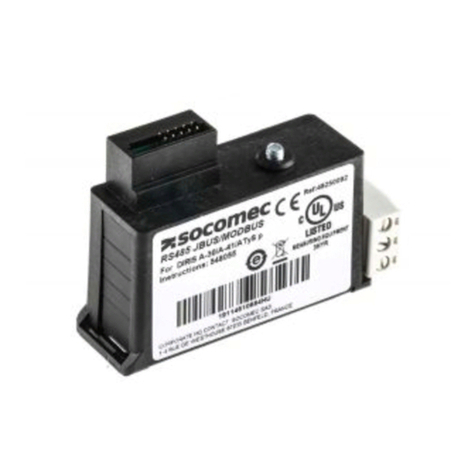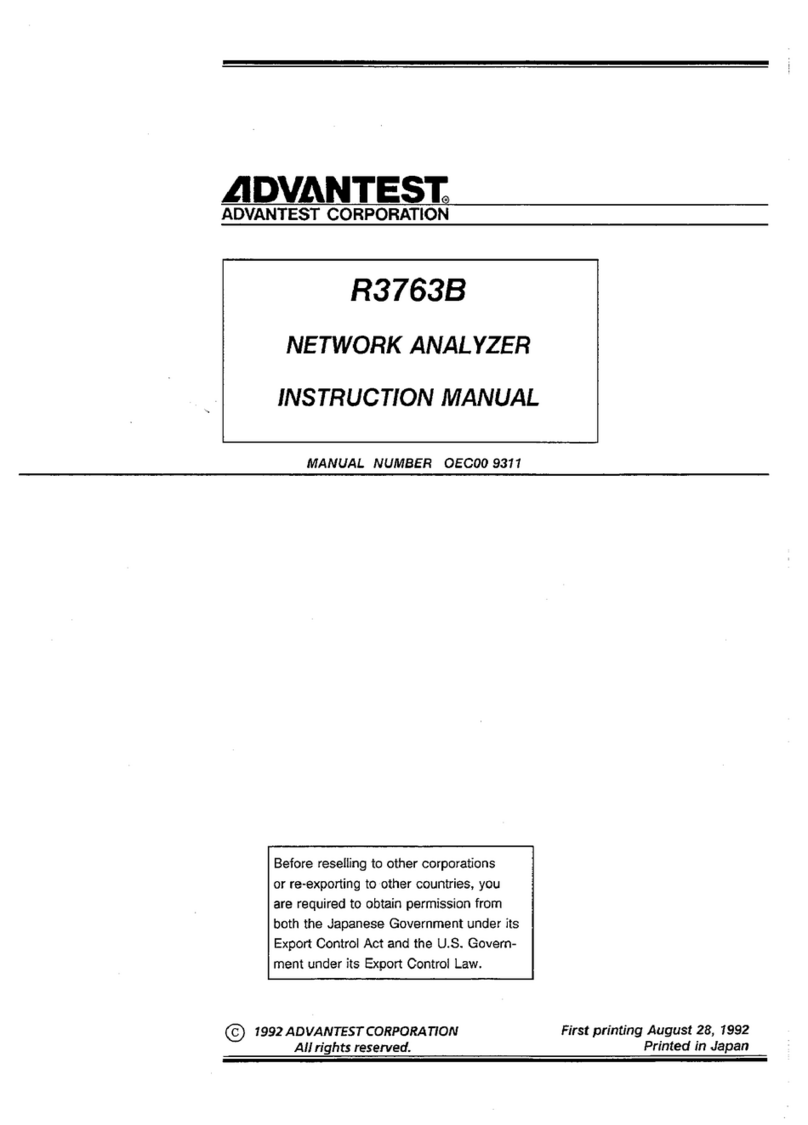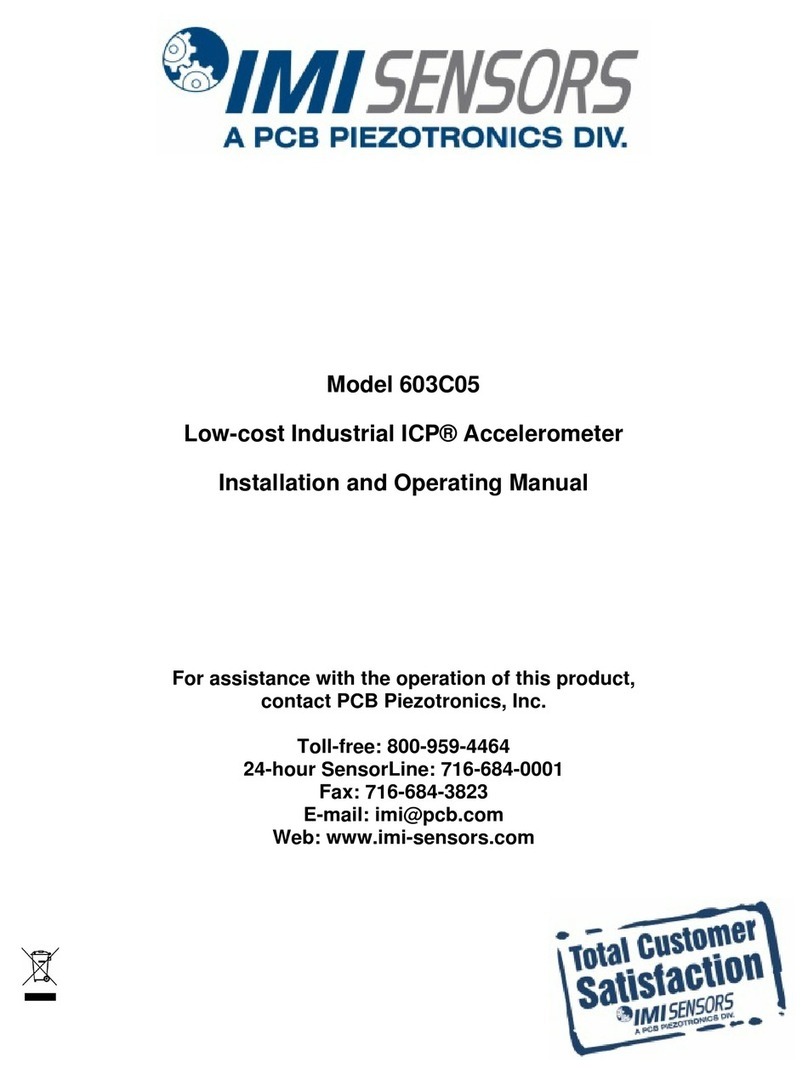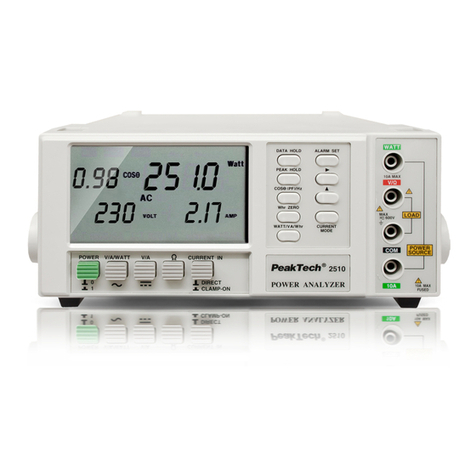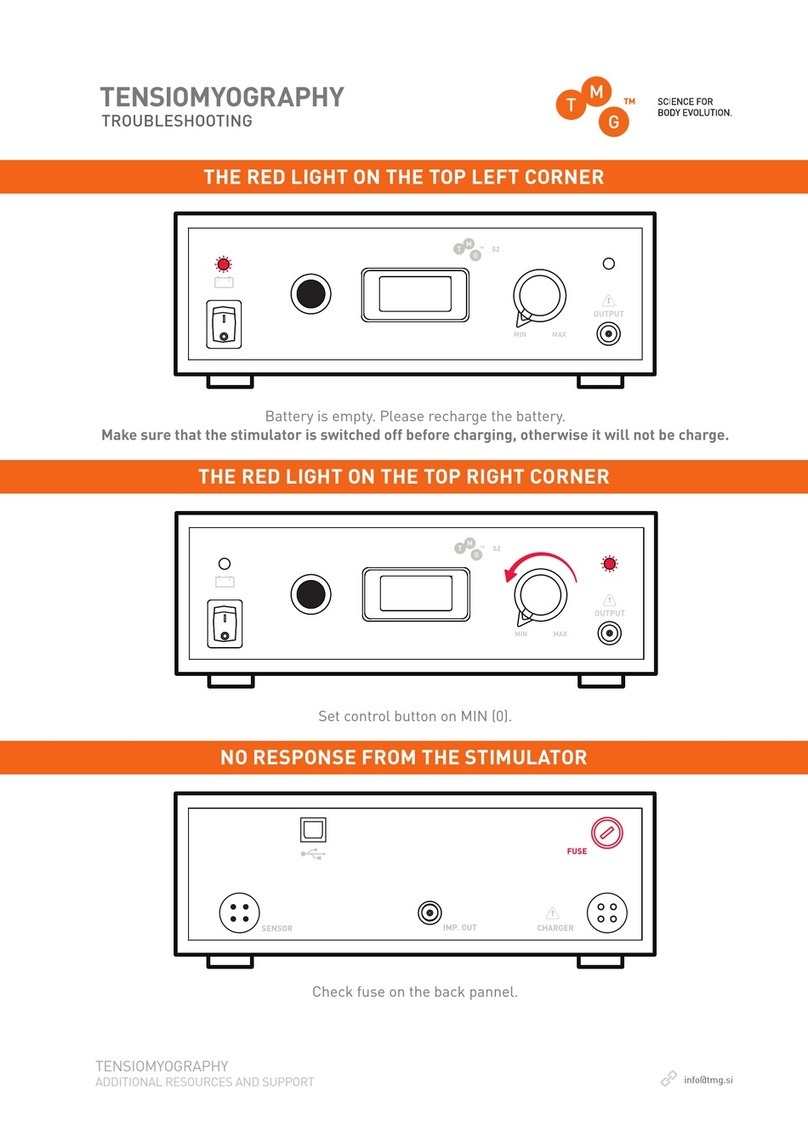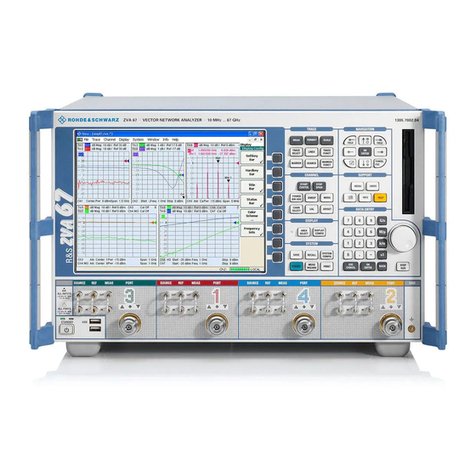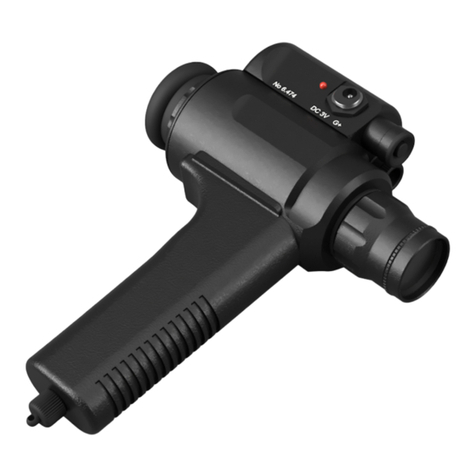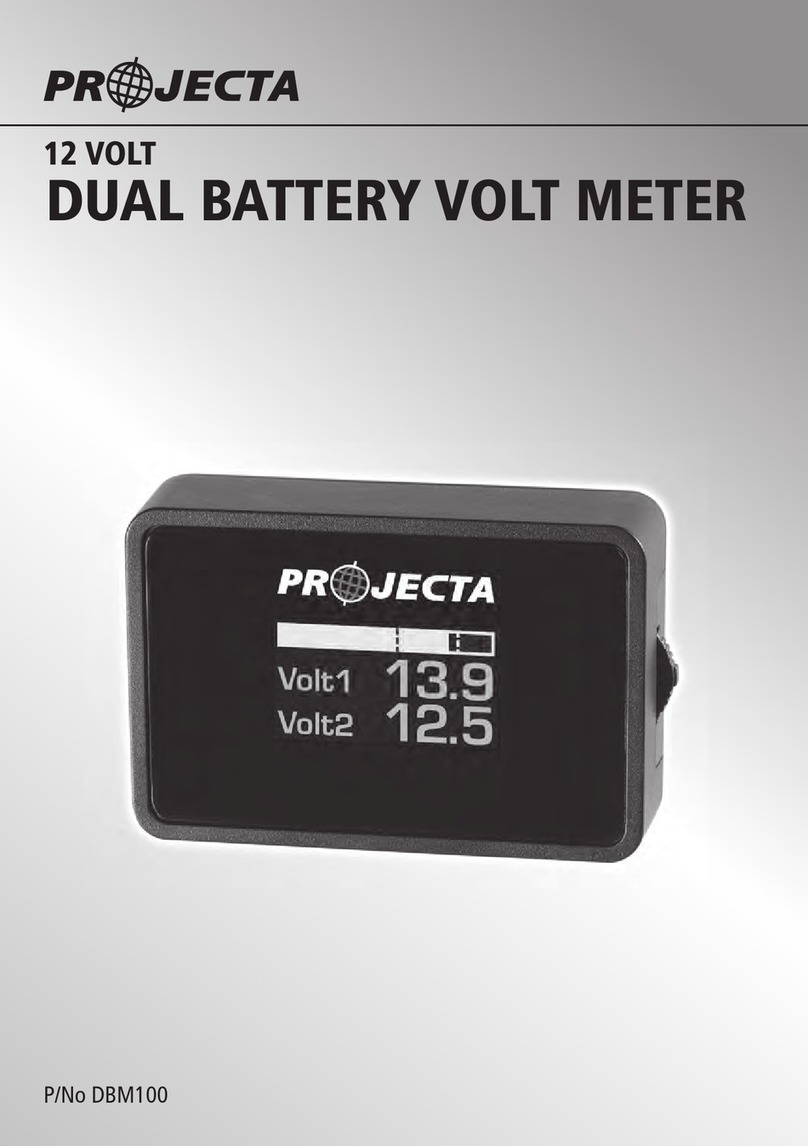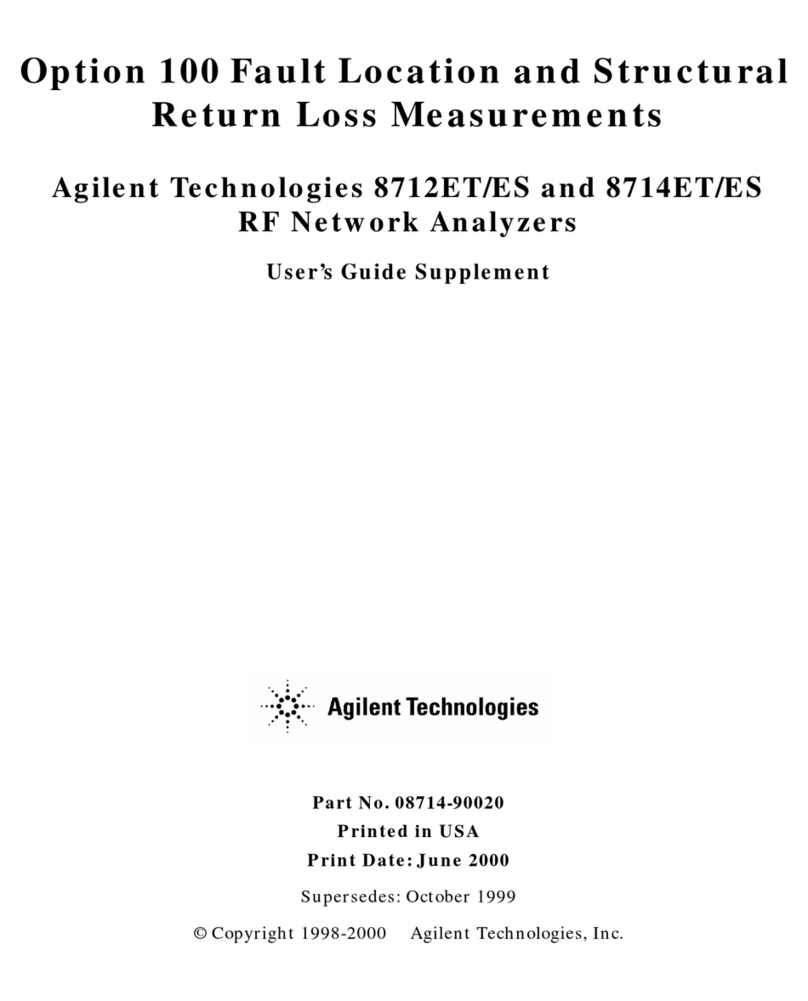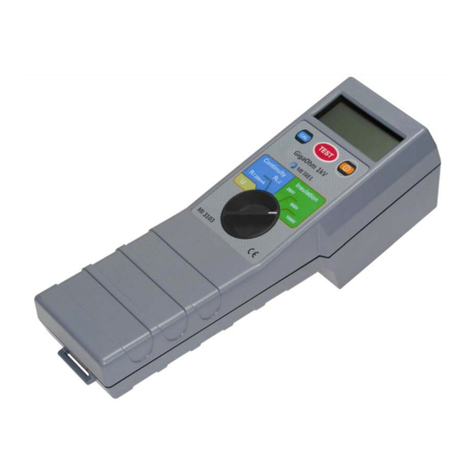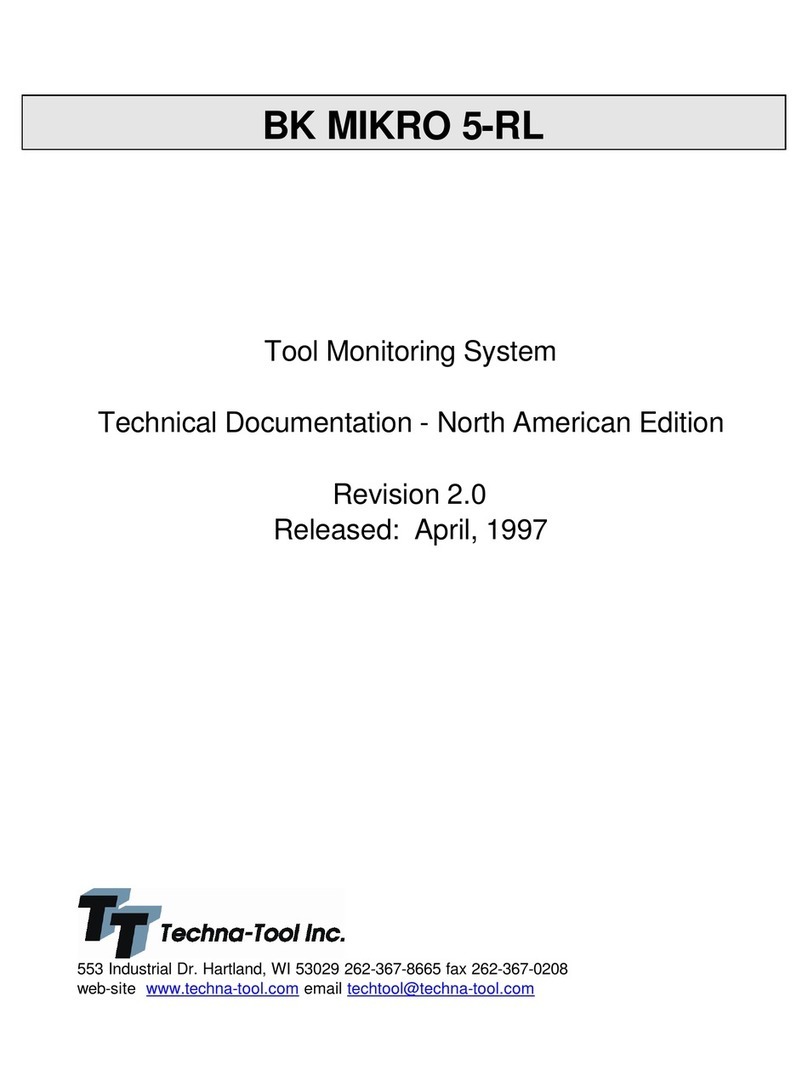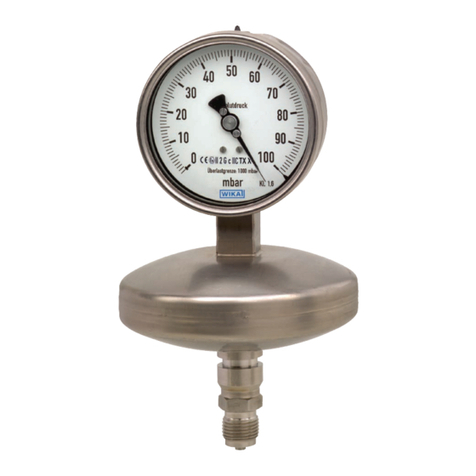MadMan EMS-3 User manual

Introduction
The EMS-3 is a multifunction engine information display and early warning engine monitoring system. It has been
specifically designed to monitor crucial vehicle information, and in the event of any engine irregularities, it will alert the
driver by means of a visual and audible alarm.
ith its array of advanced features, the EMS-3 is an indispensable unit for the discerning vehicle owner. Costly
maintenance bills can easily be avoided by the prevention of major engine problems before they occur.
Madman EMS-3
Universal Engine Monitoring System
Operating Manual – English 1.0

Madman EMS-3 Operating Manual Page 2
1 Features
Large 1.8” high resolution 160x128, sunlight readable, wide viewing angle, 1000 cd/m2 T T LCD display
Battery voltage display, the EMS-3 can measure voltages up to 30V (Can be used in 12V and 2 V vehicles)
and contains a programmable low/high voltage alarm to automatically catch alternator failures, drive belt
failures and bad batteries
Hour meter display to determine actual engine running time with 1/10 hour resolution
Built in service interval reminder based on vehicle ignition on time
EGT (Exhaust gas temperature) can be displayed in degrees Celsius or degrees Fahrenheit from -100ºC
to 1200ºC (-1 8ºF to 2192ºF) and contains a user settable high alarm.
Includes an EGT trend graph display
Includes linearization of K or J Type thermocouple probes and is cold junction compensated for greater
accuracy
x Universal analog input channels that can be configured for pressure or temperature.
Pressure sender measurement with user settable high and low alarm. Pressure sender inputs can be
from a Fuel, Oil, Manifold, Turbo Boost or an Auxiliary pressure sender.
Temperature measurement with user settable high and low alarm. Temperature sender inputs can be from
an Oil, Coolant or an Auxiliary temperature sender.
Oil Pressure warning alarm from oil pressure senders that have a switch output
Coolant level absence/presence detection by the means of AC signal probe excitation. The EMS-3 can
use inexpensive probes such as stainless steel screws to determine the coolant level. The EMS-3 can also
be used with float level type sensors. The Coolant level detection circuit also has a programmable switch
time to prevent false alarm messages when driving over rough terrain
Fan control output for on/off temperature control
All senders linearized for additional accuracy
Each sensor display can be individually enabled or disabled
Includes an external audible alarm output (The sound can be turned on/off, for example game viewing)
Dual external alarm outputs
Ambient light sensor for automatic or manual backlight control
On-board voltage reversal and over voltage protection for harsh vehicle environments
Standard 2” (52mm) circular enclosure
SMPS (Switch mode power supply) for use in both 12V and 2 V vehicles
Maximum values of all readings are recorded
Easy to use menu system for user parameter setup
Field upgradable firmware via the RS232 interface
1 year limited warranty

Madman EMS-3 Operating Manual Page 3
2 Layout
3 Main Displays
The main display screens can be viewed by pressing the up and down buttons in the normal display mode.
Sunlight readable color
graphic display
Menu Button:
Press the menu button during the normal display
screens to access the menu system.
Up Button:
Menu System: Up button / Increment
Normal: Scroll through main display
screens
2” (52mm) enclosure.
Harness connects to power
and senders
Enter Button:
Enter button in the menu system
Down Button:
Menu System: Down button / Decrement
Normal: Scroll through main display
screens
Ambient light sensor for
automatic backlight control.

Madman EMS-3 Operating Manual Page
3.1 EGT (Exhaust Gas Temperature) / Pyrometer
Few things will damage or kill a diesel engine like excessive exhaust gas temperatures, yet the EGT gauges are not
standard equipment fitted by the diesel engine manufacturers and are only available as an after market add on unit.
The EMS-3 can alert the driver of any situations where the EGT gets too high which could cause irreparable engine and
or turbo charger damage. The EGT can be affected by a too rich air/fuel mixture or an air intake problem. Air intake
problems could include a blocked/partially blocked air intake, a dirty air cleaner, high water temperatures etc. The EMS- 3
EGT gauge could also save on fuel costs as the EGT is directly related to the air/fuel mixture.
The EGT probe can be installed on the exhaust manifold or immediately after the turbo. It is recommended to install the
EGT probe before the turbo as temperature differences of up to 200ºC (392ºF) between the inlet and outlet of the turbo
has been measured under heavy loads.
Under normal driving conditions the EGT may vary between 250ºC (482ºF) and 650ºC (1202ºF). For most vehicles the
alarm limit should be set to 720ºC (1328ºF). Please be aware that pushing the engine hard or driving up a steep hill, could
cause the exhaust gas to exceed this temperature. If you have prolonged high EGT then it is recommended to
immediately have it checked out by a qualified mechanic.
Madman custom built thermocouple EGT probes are specifically designed for automotive use. The Madman EGT probes
can handle temperatures up to 1300ºC (2372ºF).
The EMS-3 can use K-Type or J-Type thermocouples to display the EGT temperature. The EMS-3 contains precision
instrumentation electronic circuitry to amplify and linearize the thermocouple sensor. The EMS-3 also has built in cold
junction compensation to make the EGT reading as accurate as possible.
3.2 Battery Volts
The EMS-3 can measure the vehicle's battery voltage in the range of 8V to 30Vdc and has built in over-voltage and
reverse voltage protection. The EMS-3 contains a programmable low/high voltage alarm to automatically catch alternator
failures, drive belt failures and bad batteries.
3.3 Pressure Display
The EMS-3 uses standard automotive pressure senders to display the pressure. The EMS-3 supports 2, 5 and 10 Bar
VDO senders, SENDO MPS 2, 5, 7, and 10 bar senders, 0.5-4.5V senders, 4-20mA pressure senders or a custom user
definable pressure sender curve.
3. Oil Pressure Switch Message
The EMS-3 can also be used to display a warning message from a switch type oil pressure sender. These senders can be
of a NO (Normally Open) or a NC (Normally Closed) type sender. The oil pressure switch uses the analog input
channel.
This message is displayed when there is an oil pressure alarm from the switch (NO/NC)
on the oil pressure sender.

Madman EMS-3 Operating Manual Page 5
3.5 Temperature Display
The EMS-3 uses standard automotive temperature senders to display the temperature. The EMS-3 also contains fail safe
temperature inputs to alert the user when the sender has been disconnected or faulty. The EMS-3 supports 120 and 150
VDO senders, a precision temperature sender, Echlin TS920SA or a custom user definable temperature sender curve.
3.6 Coolant Level Detector
The coolant level detector is an engine coolant level early warning system. It uses an AC signal probe excitation to
accurately determine the absence/presence of coolant level. The coolant level detector can use inexpensive probes such
as stainless steel screws to determine the coolant level. It also features a fail safe input circuit. The coolant level detector
can also be used with float level type sensors (These senders must be of a normally open type). The coolant level switch
must connect to the vehicles negative supply terminal when the coolant level is at an acceptable level.
The coolant level detector has a programmable switch time. This means that the level alarm from the coolant level switch
must be activated for at least the programmed time before an alarm is activated. This prevents false alarm messages
when driving over rough terrain etc. The EMS-3 also has a programmable coolant level threshold which allows the user to
fine tune the trigger point.
This message is displayed when there is a coolant level problem.
3.7 Service Timer Expired Message
This timer is set in engine hours and it will count down to zero. The purpose of this function is to assist you in determining
remaining hours until maintenance will be required.
A maximum of 9999 hours can be entered as a service interval. An alarm message will
be displayed and the appropriate alarm output will be activated (if enabled).
3.8 Hour meter
The hour meter is a useful instrument to display actual engine running time for routine maintenance. The hour meter is
displayed as hours and fractional minutes in 1/10 of an hour resolution (increments every 6 minutes). The hour meter can
be reset to zero in the “TIMERS SETUP” menu. The hour meter updates its internal minute counter every minute. If the
unit is turned on and off for a period of less then a minute, then the hour meter will not increment its internal registers.
The hour meter can be triggered by an ignition on signal or by a rise in battery voltage which signals that the engine is in
fact running.

Madman EMS-3 Operating Manual Page 6
Menu System
Press the menu button during the normal display mode to enter the menu system. Use the Up / Down keys to navigate
through the menu system.
.1 Exiting the menu system
Press the Menu button to exit the menu system when the “EXIT” soft key is shown. All changes made during navigation
of the menu system will be saved in non-volatile memory upon exiting. The instrument will not save any changes if you
remove power before exiting the menu system.

Madman EMS-3 Operating Manual Page 7
.2 EGT (Exhaust Gas Temperature Setup)
Display:
Select "ON" to enable the EGT display.
Label:
Enter a label to suit your EGT Channel so you can easily identify it.
Display Max:
Select the maximum temperature that you want the EGT bargraph to show. This can give you increased display
resolution.
Display Min:
Select the minimum temperature that you want the EGT bargraph to show. This can give you increased display resolution.
High Alarm:
This enables or disables the EGT high alarm.
High Alarm:
Enter the temperature threshold for when the high alarm must be activated. Any temperature above this value will activate
the alarm.
High Caution:
Enter the temperature value for the high caution.
Alarm:
Select which output the alarm must activate.

Madman EMS-3 Operating Manual Page 8
Probe:
Select if you are using a K-type or J-type thermocouple probe.
Unit:
Select whether you want the temperature to be displayed in degrees Celsius (ºC) or degrees Fahrenheit (ºF).

Madman EMS-3 Operating Manual Page 9
.3 Analog CH1 to CH Setup
The 4 analog channels are universal analog input channels that can be used for pressure, temperature etc.
Only “CHANNEL 1” Setup is shown below, follow the same steps for Channel 2, 3 &
.3.1 Pressure Setup
Mode:
Select the function for the analog channel. Options are “PRESSURE”, “TEMP” or “OFF”.
Type:
Select if you are using a resistive, voltage or current pressure sender.
If the “R SISTIV ” pressure sender is selected
In most cases resistive sensors require a biasing voltage to work properly. Inside the EMS3
unit is a small block of DIP switches, The switch associated with the required channel must be
in the ON position to enable the sensor to work correctly. By default, CH1 + CH2 are ON and
CH3 + CH are off. Failure to set the DIP switch will not cause damage but will cause false
readings.

Madman EMS-3 Operating Manual Page 10
Sender:
Select what type of resistive pressure sender you are using. Select “VDO” for VDO / resistive senders, “USER” for a
custom sender.
Model:
Select which VDO pressure sender you are using. A selection between a VDO 2, 5 or 10 Bar can be selected.
If the “VOLTAG ” pressure sender is selected
Sender:
Select the type of voltage sender you are using. Select “SENDO” for SENDO senders, "0.5-4.5V" for voltage senders, or
“USER” for a custom voltage sender.
Model:
Select which SENDO pressure sender you are using. A selection between a MPS 2, 5, 7 or 10 Bar can be selected.
If the “CURR NT” pressure sender is selected
Sender:
Select the type of current sender you are using. Select “4-20mA” for 4-20mA sender or “USER” for a custom 4-20mA
sender.
Pressure @ 4mA:
Enter the pressure specified at 4mA output.
Pressure @ 20mA:
Enter the pressure specified at 20mA output.
Menu options for all sender types
If the “US R" pressure sender is selected
Calibrate Sender:
If the sender type is set to “USER”, then use this menu option to calibrate your pressure sender. See section 4.3.3 for
more information.
Label:
Enter a label to suit your pressure channel so you can identify it easily.
Unit:
Select whether you want to display the pressure in Bar or psi.
Display Max:
Select the maximum pressure that you want the bargraph to show. This can give you increased display resolution.
Display Min:
Select the minimum pressure that you want the bargraph to show. This can give you increased display resolution.
High Alarm:
This enables or disables the pressure high alarm.

Madman EMS-3 Operating Manual Page 11
High Alarm:
Enter the pressure threshold for when the high alarm must be activated. Any pressure above this value will activate the
alarm.
High Caution:
Enter the pressure value for the high caution. This is the lower value of the upper yellow band.
Low Caution:
Enter the pressure value for the low caution. This is the upper value of the lower yellow band.
Low Alarm:
This enables or disables the pressure low alarm.
Low Alarm:
Enter the pressure threshold for when the low alarm must be activated. Any pressure below this value will activate the
alarm.
Alarm:
Select which output the alarm must activate.
.3.2 Temperature Setup
Mode:
Select the function for the analog channel. Options are “PRESSURE”, “TEMP” or “OFF”.
Sender:
Select what type of sender you are using. Select “VDO 120” for a VDO 120 degree sender, “VDO 150” for a VDO 150
degree sender, “ECHLIN” for a ECHLIN TS920SA sender, “LM335” for the precision temperature sender or “USER” for a
custom sender.
If the sender type is set to “US R"
CALIBRAT S ND R:
If the sender type is set to “USER”, then use this menu option to calibrate your pressure sender. See section 4.3.3 for
more information.

Madman EMS-3 Operating Manual Page 12
If the sender type is set to “LM335"
LM335:
If the sender type is set to LM335, then use this menu option to calibrate your LM335 precision temperature sender. If
recalibration is required then adjust the value until the temperature matches the reference ambient temperature. Please
note that the LM335 can only be calibrated in degrees Celsius irrespective if the EMS-3 is setup to display temperature in
Fahrenheit.
Menu options for all sender types
Label:
Enter a label to suit your temperature channel so you can identify it easily.
Temp Unit:
Select whether you want the temperature to be displayed in degrees Celcius (ºC) or in degrees Fahrenheit (ºF).
Display Max:
Select the maximum temperature that you want the bargraph to show. This can give you increased display resolution.
Display Min:
Select the minimum temperature that you want the bargraph to show. This can give you increased display resolution.
High Alarm:
This enables or disables the temperature high alarm.
High Alarm:
Enter the temperature threshold for when the high alarm must be activated. Any temperature above this value will activate
the alarm.
High Caution:
Enter the temperature value for the high caution. This is the lower value of the upper yellow band.
Low Caution:
Enter the temperature value for the low caution. This is the upper value of the lower yellow band.
Low Alarm:
This enables or disables the temperature low alarm.
Low Alarm:
Enter the temperature threshold for when the low alarm must be activated. Any temperature below this value will activate
the alarm.
Alarm:
Select which output the alarm must activate.

Madman EMS-3 Operating Manual Page 13
.3.3 Calibrating the user defined pressure and temperature senders
1. Enter the number of points that you want to calibrate.
2. Enter the display reading that you want to show when the sender is at that actual
display reading.
3. Enter the ADC (analog to digital converter) reading that corresponds to this display
reading. The ADC reading is shown at the top of the display if you are applying the
actual stimulus from the temperature, pressure or current sender. You can also
manually enter this value if the ADC value is known or pre-calculated.
4. Continue entering display and ADC values until all the points have been entered.
5. Verify the above calibration by checking the temperature, pressure or current display
versus the actual applied sender stimulus.

Madman EMS-3 Operating Manual Page 1
. Volts Setup
Display:
Select "ON" to enable the Volts display
Label:
Enter a label to easily identify your Volts reading.
Display Max:
Select the maximum value that you want the volts bargraph to show. This can give you increased display resolution.
Display Min:
Select the minimum value that you want the volts bargraph to show. This can give you increased display resolution.
High Alarm:
This enables or disables the volts high alarm.
High Alarm:
Enter the voltage threshold for when the high alarm must be activated. Any voltage above this value will activate the
alarm.
High Caution:
Enter the voltage for the high caution. This is the lower value of the upper yellow band.
Low Caution:
Enter the voltage for the low caution. This is the upper value of the lower yellow band.
Low Alarm:
This enables or disables the volts low alarm.

Madman EMS-3 Operating Manual Page 15
Low Alarm:
Enter the voltage threshold for when the low alarm must be activated. Any voltage below this value will activate the alarm.
Alarm:
Select which output the alarm must activate.
Cal:
Measure the battery voltage with a multimeter and then adjust this value to match that of the multimeters volts reading.
.5 CLD (Coolant Level Detector) Setup
Display:
Select "ON" to enable the CLD display.
Switch Time:
The coolant level has a programmable switch time. This means that the level alarm from the coolant level switch must be
activated for at least the programmed time before an alarm is activated. This prevents false alarm messages when driving
over rough terrain etc.
Sensitivity:
Adjust the sensitivity to fine tune the trigger point.
Alarm:
Select which output the alarm must activate.

Madman EMS-3 Operating Manual Page 16
.6 RPM Setup
Display:
Select if you want the RPM to be displayed in “RPM”, “PERCENT” or “OFF”.
RPM 100%:
Select the maximum value that you want the RPM to correlate to 100%. This is only shown if “Percent” is selected for
display.
Display Max:
Select the maximum RPM that you want the RPM dial to show. This can give you increased display resolution.
Display Min:
Select the minimum RPM that you want the RPM dial to show. This can give you increased display resolution.
High Alarm:
This enables or disables the RPM high alarm.
High Alarm:
Enter the RPM threshold for when the high alarm must be activated. Any RPM value above this value will activate the
alarm.
High Caution:
Enter the RPM value for the high caution. This is the lower value of the upper yellow band.
Low Caution:
Enter the RPM value for the low caution. This is the upper value of the lower yellow band.

Madman EMS-3 Operating Manual Page 17
Low Alarm:
This enables or disables the RPM low alarm.
Low Alarm:
Enter the RPM threshold for when the low alarm must be activated. Any RPM value below this value will activate the
alarm.
Pulses/Rev:
Enter the number of pulses per rev. For engines with an uneven number of cylinders like three cylinder four stroke
engines you can enter values containing fractions (usually 1.5 in this example). Most four stroke engines would generate
one pulse for every two revolutions per cylinder. A four cylinder automotive four stroke engine would thus generate 2
pulses per revolution as measured on the coil. Alternatively the signal from the alternator can be used. Here the
onboard diagnostics can be used to get accurate rpm or an external RPM gauge must be used and the pulses/rev
calculated from there.
Increment:
Select the step size between successive RPM values eg. if the RPM value is 4003 RPM and the “INCREMENT” is 5 then
the actual value shown is 4005 RPM.
Label:
Enter a label to easily identify your RPM reading.
Alarm:
Select which output the alarm must activate.
.7 Oil Pressure Switch Setup
Display:
Select "ON" to enable the Oil Pressure switch display. The oil pressure switch uses the analog channel input.
Switch NO/NC:
Select if the pressure switch is normally open (NO) or normally closed (NC) .
Alarm:
Select which output the alarm must activate.

Madman EMS-3 Operating Manual Page 18
.8 Output Setup (Fan control)
Mode:
Select "FAN CNTRL" to enable the fan control output.
Analog CH:
Select which analog temperature channel the fan control must operate from.
Fan On Temp:
Enter the temperature when the output must switch on.
Fan Off Temp:
Enter the temperature when the output must switch off.
Alarm:
Select which output the alarm must activate.

Madman EMS-3 Operating Manual Page 19
.9 Timers Setup
Set Hour Meter:
This function allows you to set the engine hour meter to any value. Typically, you would
use this function to set the hour meter to the current known engine time. If the hour meter
code is set to another value beside zero, then the user will be prompted to enter the hour
meter access code before allowing him to change the hour meter time.
Hour meter Code:
This menu option allows you to change the hour meter access code. You will first be prompted to enter the current code
followed by entering in a new code followed by re-entering the new code. If the new code and the re-entered code is the
same, then the hour meter access code will be changed. Default code is 0000.
Hour Meter:
Select "ON" to enable the hour meter display

Madman EMS-3 Operating Manual Page 20
Set Service Timer:
This function allows you to set an engine service
timer. This timer is set in engine hours and it will count
down to zero.
Alarm:
Select which output the alarm must activate when the service timer reaches zero.
Start:
Select if the EMS-3 must start the hour meter and service timer from power up or from when a pre-selected volts
threshold has been exceeded.
Volts:
Enter the volts threshold that must be exceeded for the hour meter and service timer to start.
Table of contents
Other MadMan Measuring Instrument manuals

